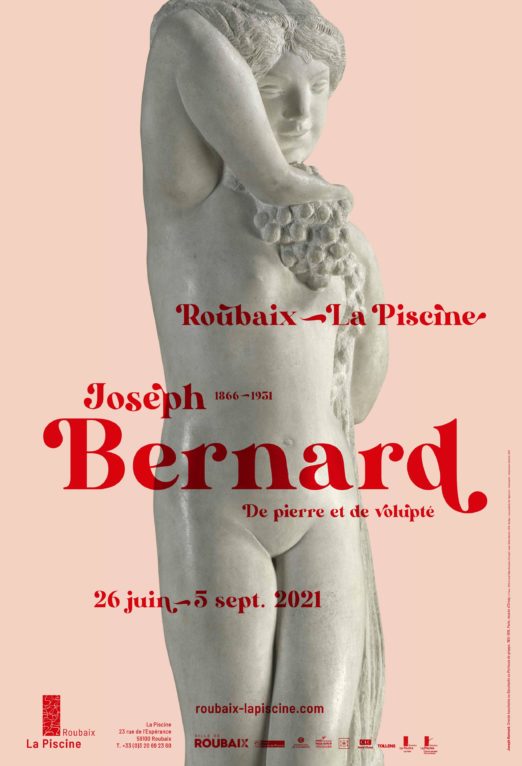Joseph Bernard (1866-1931): From stone to sensuality
June 26 to September 5, 2021
Barely known by the general public, Joseph Bernard was nevertheless omnipresent on the art scene of the Art Deco period and several of his achievements, such as the Dance frieze or the Girl with a jug, have become part of the collective visual memory.
The first retrospective exhibition devoted to him today brings together more than 200 works and aims to rediscover the wealth of his talents as a sculptor but also as a designer, along with his contributions in the field of public monuments and the decorative arts. The tragic inspiration of the beginnings, rooted in the Symbolist Movement and marked by the influence of Rodin, rubs shoulders with a more joyful vein, drawing on mythological motifs as well as scenes of family intimacy. Poets and melancholy thinkers give way to friezes and circles of dancers; to Salome, Orpheus and the Sphinx followed by fauns and bacchants. And as always, love, song, dance and rhythm prevail among the subjects.
Attracted by “the life of the soul” without ever renouncing the senses and the flesh, Joseph Bernard has developed a singular art, in which an obvious mystical dimension hesitates between religiosity and paganism, and where the massive and simplified forms portray a kind of primitive and classical modernity, inspired by Greek antiquity and oriental cultures.
Celebrated as the initiator, or prophet even, of the return to direct sculpting, Joseph Bernard was raised to a place of honour in the sculpture of his time. Given the silence or the scarcity of his words, at the very least, his discretion and the lack of any theoretical inclination, a genuine myth has arisen surrounding the artist that emphasises his premature genius, incessant labours, fierce independence and the primacy of instinct.
However real these qualities may be, they conceal the aesthetic intentions of an artist in search of purity in harmony, moved by an aspiration for perfection which explains the use of direct sculpting techniques, without intermediary, and plastic synthesis. Walking “towards an art which would be the intense expression of Beauty in its most characteristic lines”, Joseph Bernard was guided not only by matter but also by thought. Similarly, the exclusive focus on his work as a stone carver has led people to believe wrongly that he had abandoned modelling, the use of clay and, above all, plaster, which nevertheless remained part of his expert repertoire throughout his career.
Designed in co-production with the Paul-Dini museum in Villefranche-sur-Saône, this exhibition benefits from the exceptional support of the Musée de la Fondation de Coubertin in Saint-Rémy-lès-Chevreuse and the Museum of the 1930s of Boulogne-Billancourt. Surrounding the works in the Roubaix collections (a head from the Monument to Michel Servet, a bronze from the Great Bacchante and two busts, Plumed head and Head of a young girl, acquired very recently thanks to the circle of patron companies, the Friends association and state aid) are more than 200 drawings (pen, wash drawing, watercolour) and sculptures (stone, plaster, wood, bronze). This exhibition could not have seen the light of day without the invaluable commitment of the artist’s family and the generosity of private and public lenders, foremost among which is the Musée d’Orsay and the Musée d’Art Moderne of the Ville de Paris, but also the museums of Lyon, Grenoble, Vienne and Belfort.
Scientific curator Soline Dusausoy and Valérie Montalbetti
General Curator Sylvie Carlier and Alice Massé



